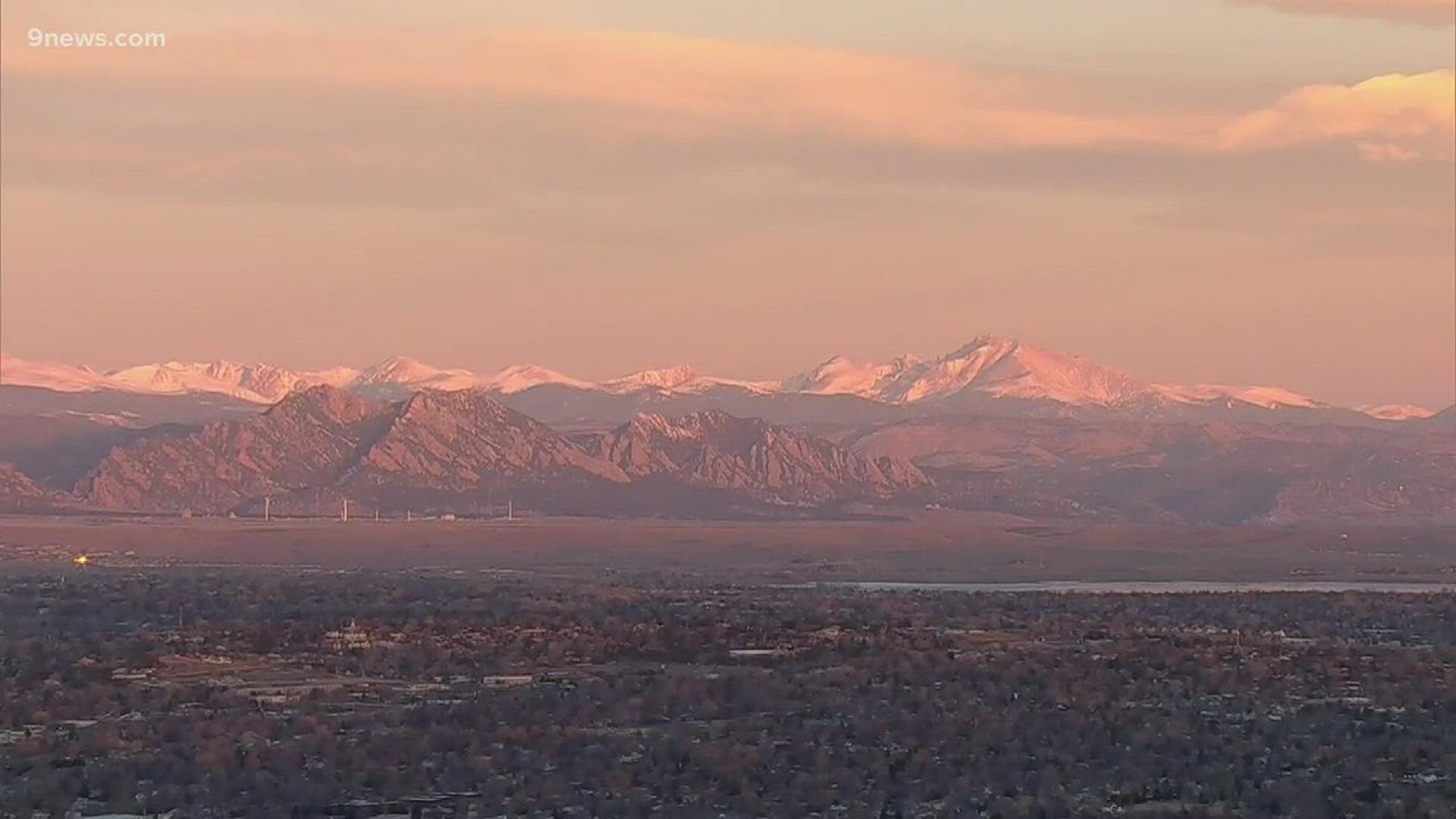At 13,294 feet, James Peak is tough to climb in the middle of summer. Lewis Walker, 27, and Byron Sortor, 28, did it at the end of December.
“We were thinking it would be a day hike. Nothing too serious. So I didn’t pack everything I should have. And we went up the mountain,” Sortor, who would later regret his lack of gear, said.
Clouds filled the forest on their way up.
“That’s when we should have turned back,” Walker said.
But they pushed on, summitting the 13er with jackets, hiking boots and little more.
The views seemed worth it at the top where they were above the clouds, looking down on the gray descent that would soon leave them wondering if they’d survive.
“The fog was so dense, ten foot visibility -- we couldn’t see anything. We started walking, oh crap, we don’t really know where were going. Then the sun went down and we really didn’t know,” Walker said.
Their hiking shoes and socks froze. They had no idea where they were. And they couldn’t see a thing. So the two stopped for the night, hoping to climb out in the morning.
“We did the only thing we knew how to do to stay warm. We put each other’s feet in each other’s arm pits and did that for about six hours then search and rescue came,” Sortor said.
Alpine Rescue only came because the two let their roommate know where they were going. When it got late, Tim Mednick called police and drove to the trailhead.
“The second I saw the jeep in the parking lot I knew something was wrong. My heart just sank,” Mednick, who would wait for a snowcat that set out for his friends, said. “This is happening. They’re stuck on the side of a mountain at 11 o’clock at night. It’s negative sixteen. Yeah. Yeah that was slightly terrifying.”
Blaring sirens moved closer to the men half asleep far from where they were supposed to be.
“They were across the stream and couldn’t come directly to us,” Walker said. “So, we had to go to them. At that point our shoes were frozen, socks were frozen. We couldn’t get back on. We were too cold to maneuver. So, we had to do it barefoot, crawling on bare hands, bare feet. Through the snow about 50 yards or so. Got to the stream, traversed the stream than another 20 yards to the snowcat. That was very painful. Nothing but gasping the entire way.”
Frostbite had set into their hands and feet. As they started to thaw out, the pain set in.
“Rewarming cold extremities is one of the most painful things anyone can experience,” Dr. Patrick Duffy with the University of Colorado Hospital Burn and Frostbite Center said. “Even when they came in, they had cold to the touch feet and hands and were already developing blisters which is a sign they had that second-degree, that real frostbite.”
Duffy gave them a blood clot busting drug called tPA that’s also used to regain circulation in the extremities of frostbite victims. It worked for Sortor and Walker who are recovering.
“At least at that point I knew we were safe. We were fine. We weren’t going to end up corpses on a mountain,” Walker said. “We’re going to be doing stuff a lot smarter. And we’re going to turn around when we think we should.”

